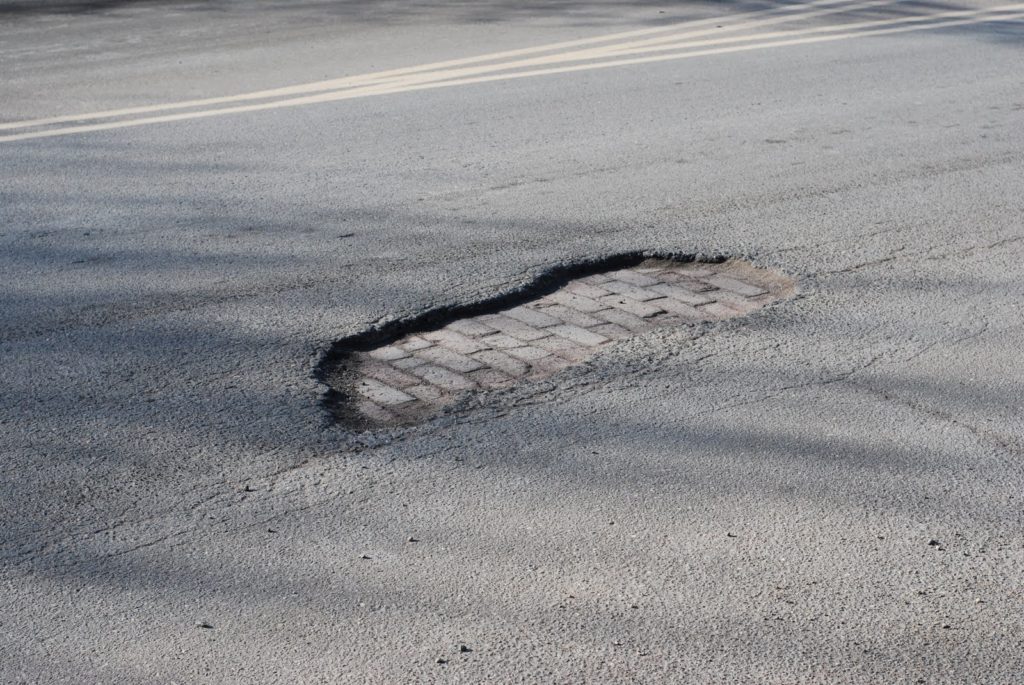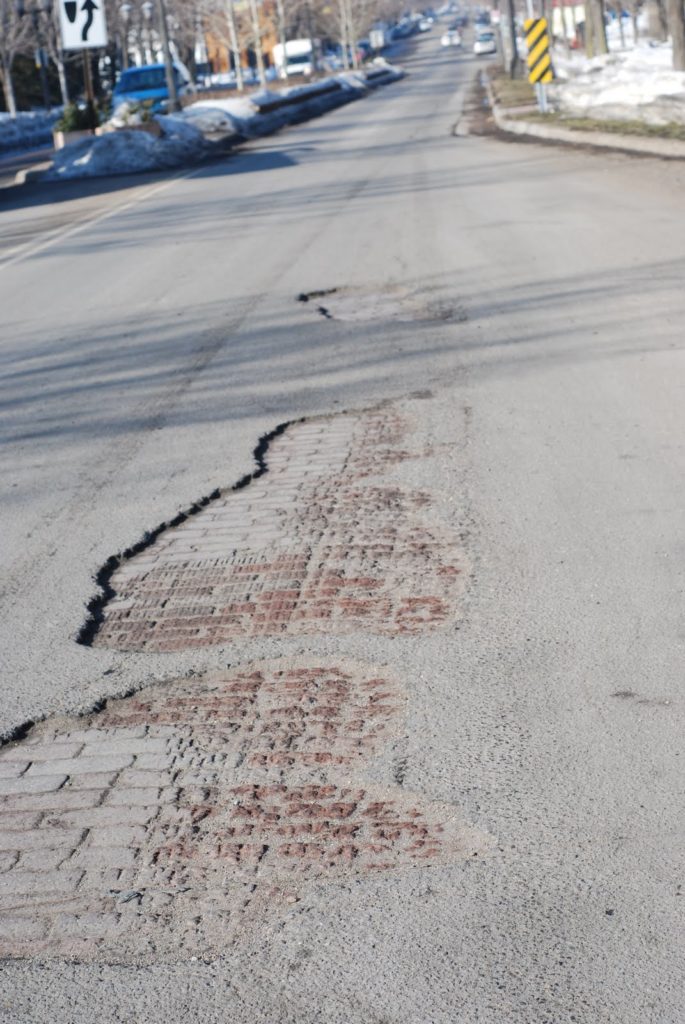Bricks are by no means a panacea, but they’re a different idea. First, they’re showing up in more places, such as on Grand Avenue just west of Snelling. (I don’t know what happened to the bricks on the right side, but they’ve been ground up a bit.)
What’s interesting here is that Macalester College funded the building of a median in the street a few years ago (you can see it at the top of the picture above) for the benefit of pedestrians: dorms are to the north (right) of the street and the dining hall and academic buildings are to the south. The street used to be three paved lanes with a striped median (it disappeared in the winter), and the new median entailed rebuilding the street—there are plans for one on Snelling as well (which we covered last year)—and tearing out the brick and rails. One wonders why they couldn’t have kept the brick—there is little heavy traffic on the street except for buses. This is relatively new pavement that’s already coming up.
Second, some crosswalks further down Grand (a mile east, at Lexington) were built with brick pavers, most likely for aesthetic purposes. What’s illustrated here is that when bricks are uprooted—in this case, most likely by passing snow plows—they can be replaced piece meal. And, unlike asphalt, replaced bricks don’t result in ugly patches that just rip back out, anyway (except where the patches in the brickwork are patched with asphalt, which is especially ugly and does rip right out).




Bricks are an incredibly great street material; they last a very long time, and they decay "gracefully" unlike asphalt, and repairs are straightforward.
Brick roads are good for 50 years under most conditions with minor repairs — asphalt for less than 5.
The smoother ride of asphalt is really only useful for expressways and long-distance roads.
Unfortunately, it's very hard to get asphalt off of bricks properly if you've paved over the bricks; the brick surface tends to be badly messed up.
I blame the oil lobby.
Actually it's not necessarily the oil lobby…
My father is a civil engineer who has worked for a few multinational firms. One of the key differences between US roads and roads that last longer in some other countries (not all roads do, but some do) is the bidding process.
In the US the default practice is lowest bid for a set of parameters wins. One of the key parameters almost always lacking in a US bid are either guaranteed road life / maintenance requirements.
If I am required to build / refinish a road but am not required to make any guarantees as to how long my product will last there is a tendency to be the lowest bid by using the lowest quality product.
If my bid and financial success is based upon that road lasting 10 years then my bid will both be more expensive and use higher quality materials. The technology (both construction methods and materials) exists for higher quality / longer lasting roads. The problem is the current bidding system does not encourage their use.
Front loading the cost for materials / quality initially may drastically reduce the cost of the road over a long period of time, as labor is a very large portion of the cost.
These are some of the issues arise when a bid is put out for the lowest price and the design specifications lack parts that while increasing the upfront municipal cost may in fact be cost saving measures.
Not to mention, less time spent resurfacing / maintaining a road means less congestion and less time lost (which is money /productivity lost) by those using the roads.